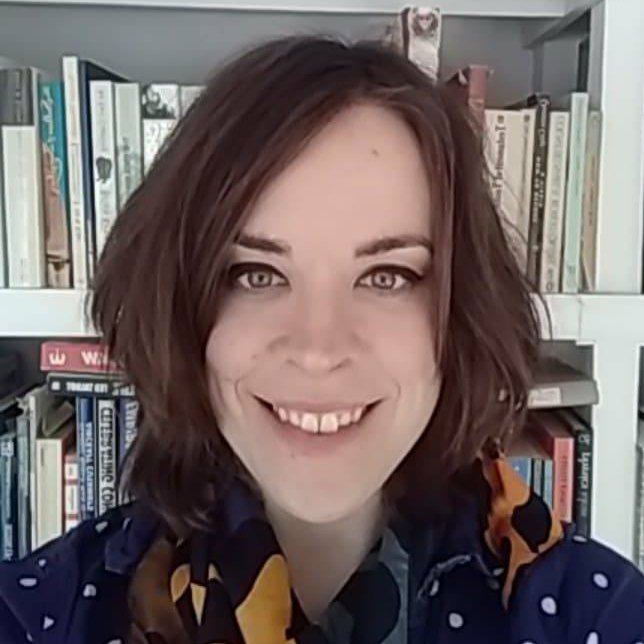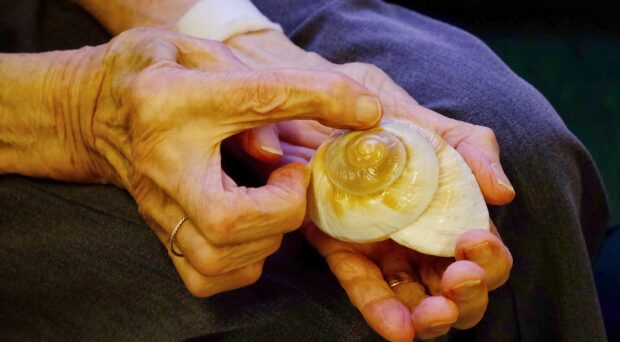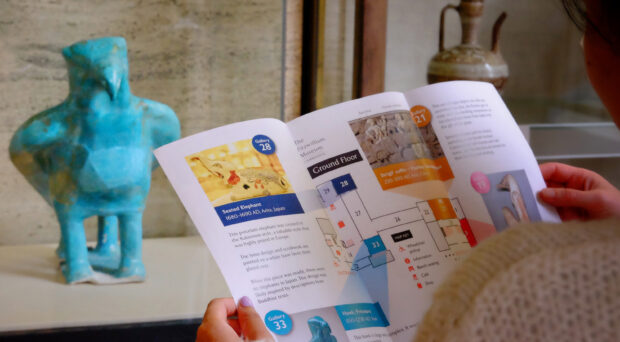Abi L. Glen is a PhD student at the Faculty of English, University of Cambridge. Find out more about her time as a Doctoral Partnership intern at the Founder’s Library at the Fitzwilliam Museum…
The Founder’s Library at the Fitzwilliam Museum is the ideal place for a jaded PhD student to re-discover the excitement of medieval manuscripts. Madness, mayhem and extremely careful handling of the materials ensue…
Getting Started
On my first day at the Fitz, I was just early enough to snap a few comedy selfies at the gates (#exciteatthemuseum). Granny/ego appeased, I was ready to meet Assistant Keeper Dr. Suzanne Reynolds, and Research Associate Dr. Deirdre Jackson for the two mainstays of museum life: tea and planning. It is to their everlasting credit that they received me – a ball of nervous energy, unsharpened pencils and pom-pom sneakers -with such good grace.
Feeling instantly welcome, I set up camp in the Founder’s Library, my base for the next two months. You should go if you get the chance, but the Founder’s Library is easy to picture: just imagine a Regency ballroom built for introverts. My first few weeks were devoted to MS Fitzwilliam 2o, a luxurious miscellany decorated with the finest of miniatures. Much to Suzanne’s amusement, it turns out that our conservator Edward (more of him later) shares my interest in the marks and scars on manuscript pages. With our conversation in mind, I drafted a paper testing theories I had about perforation and invasion in the manuscript. This applied to he texts and miniatures, but also in the ways the animal’s skin had been invaded by pests – not least the people preparing their skin for the scribe.
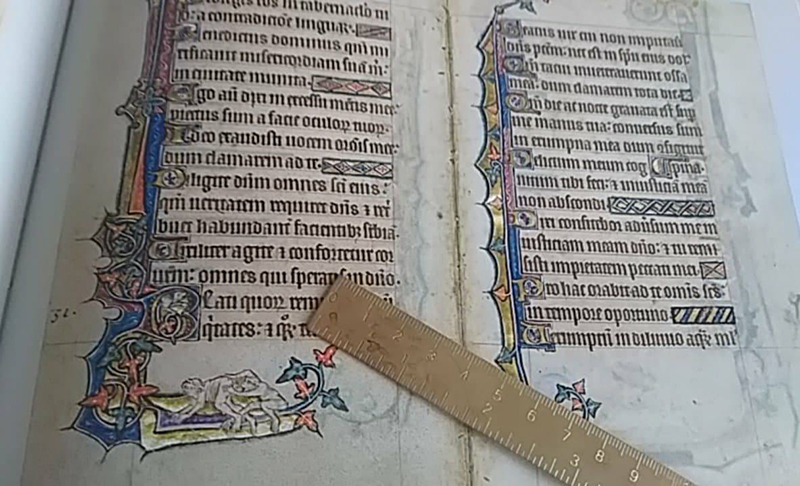
Cataloguing
Next, I prepared three catalogue entries for the Cambridge Illuminations Research Project, under Suzanne’s warm and knowledgeable guidance. Senior Curatorial Assistant Nicholas Robinson was also always on hand to dispense manuscripts, extra research notes, and dry laughs. My three babies for the month were MS McClean 123, MS Fitzwilliam 254, and MS Fitzwilliam 379 – all containing bestiaries, all from the thirteenth century, and all maddening but loveable in the way that real babies are. My aim was to delve into all of the elements of a thorough catalogue: accruing and displaying systematic information about hands, dates, provenance, bindings, materials, artists, scripts and related literature. I am infamously inconsistent and hopeless at formatting – an old supervisor once suggested that my thesis was ‘an exercise in Computer Says No’ – but this was a great chance to change all of that. All I can say is – poor Suzanne. Nonetheless, I had a slightly worrying amount of fun chasing the details of provenance and production of the manuscripts, like some kind of demented Poirot (if Poirot had to really work at being good at his job). But I became completely immersed, and loved the work. On one well-marked occasion, Nicholas had to – gently – boot me out of the library at closing, when I’d become entirely engrossed by essays on booklet theory (you will be shocked to learn that ‘singleton’ doesn’t just apply to solo halves of bifolia).
I shouldn’t play favourites, but I have a special affection for McClean 123. To run with the child-rearing metaphor, it takes a village to catalogue a manuscript, and this meant teaming up with Edward Cheese, Conservator and Assistant Keeper. I strongly suspect Edward is secretly a wizard. He instantly identified the complicated binding, and showed remarkable patience with my – cough – idiosyncratic collation diagrams, and inability to spell ‘alum tawed’. He was also able to collate the final quire of this manuscript, an achievement which, frankly, ranks among sliced bread, antibiotics, and Purple Rain. Suzanne and I also spent lots of time going over drafts of the Comments section, debating ownership and miniature artists, while she gently corrected sheaves of my typos.
Outreach
Mercifully for Suzanne, there were plenty of opportunities for me to step away from the Justify button, and into outreach. The Founder’s Library is the base not only for visiting scholars, but for an array of visiting students. I was lucky enough to be a part of three of these visits, shadowing Dei and Suzanne while they showed off some of the treasures of the Library. First up were the Art History undergraduates: swishy of hair, swag of attire and keen of mind, they listened attentively as Dei guided them through a variety of Missals, Pontificals, and Books of Hours. Dei has a rare combination of encyclopaedic knowledge and utter chill, qualities which make her a magnificent teacher – a pleasure for me, and even more so for her lucky students. Other highlights included the delight of one student when she learned that she could call up manuscripts of her own at the University Library. I like to think that I can spot the medievalist in any pack (it’s often a question of knitwear, and a sense that they’re noticing everything) and it was heartening to see her newfound enthusiasm for manuscripts. A lovely antidote to me, jaded and haggard at the end (hah) of my PhD.
Next came the Theology Department’s Study Day around Religion and the Arts. Groups of students aged 15-19 came to Founder’s to enjoy a display of religious manuscripts—including my old pal, MS 20. It wasn’t until the third group that we had any male students, which rather coloured my description of the bestiary Beaver hacking off his own testicles. Ah well— as Dei deftly pointed out, we couldn’t make this stuff up. They were lively and curious though, especially about how Dei and I wound up in a dark library on a Saturday afternoon, talking about friars’ genitals. The answer is: we do this for fun. Just kidding! Their questions about our career paths highlighted just two of the many ways people come to museum work, and medievalism, and it was great to hear that so many of them were moved to apply to Cambridge.
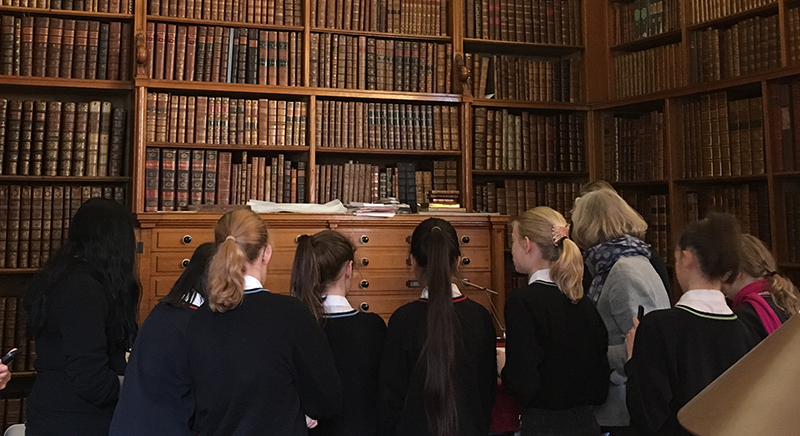
Lastly, we had a visit from a group of younger students from the North Cambridge Academy [the Fitzwilliam’s Museum Ambassadors]. Suzanne and John assigned them the task of presenting three objects (a Beethoven MS, a Sassoon poem, and a book of 18th century butterflies) and designing a Founder’s Library 2.0. Once again, we were seriously impressed by their clever suggestions. Perhaps the best moment was when the class were told they had to finish up so that they could get their snack downstairs. One of the students said, rather balefully, that she would ‘rather stay and look at the books than have a biscuit’— and so, #booksoverbiscuits was born. A maxim for life, or at the very least a t-shirt – somebody should let the Shop know.
Outcomes
So what did I learn? Well. Here are some things I was worried about/afraid of before my internship: accurate foliation, binding vocabulary, spilling something /setting something on fire, reading Anglo-Norman, identifying unknown texts, Art Historians, collation diagrams, Latin grammar, snakes (the real kind and the ones you use to hold open manuscripts— am I putting them in the wrong place?), anglicana formata, teaching undergraduates, if I would ever be able to produce anything without typos, and presenting manuscripts to (possibly bored) teenagers. Here are the things I am worried about/ afraid of after my internship: ok, well, I probably will never rid myself of the typos. And obviously I am still terrified of real snakes because that’s just sensible. But the work and opportunities I was given at the Founders have given me heaps of confidence, and (I hope) I’ve produced some useful entries for the Project, and the scholars who will use it.
And finally: it is a truth universally acknowledged that a person in possession of a small stipend, must be in want of the AHRC DTP SDF. [Doctoral Training Partnership Student Development Funding, from the Arts & Humanities Research Council – Ed.] I am grateful for the generosity of the fund and for the support given to me by the DTP staff, and my supervisors, in making the application. I am also very grateful to the Keeper, Dr. Stella Panayotova, who despite being on research leave, gave me her precious time, excellent advice, and strong encouragement. On that note, I would also encourage anyone in the DTP to apply for a similar stint in the Founder’s Library – I’ve loved every collation, catalogue and colleague, and it’s hands-down the best thing I’ve done during my PhD.

